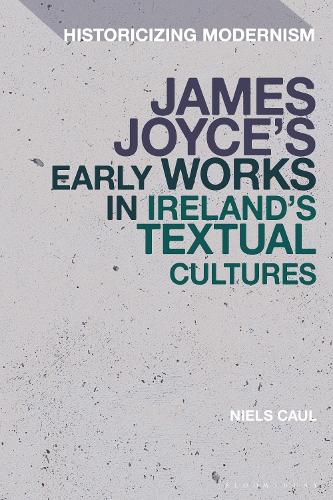
James Joyce's Early Works in Ireland's Textual Cultures
(Hardback)
Publishing Details
James Joyce's Early Works in Ireland's Textual Cultures
By (Author) Niels Caul
By (author) Niels Caul
Bloomsbury Publishing PLC
Bloomsbury Academic
13th November 2025
United Kingdom
Classifications
Professional and Scholarly
Non Fiction
Literary studies: fiction, novelists and prose writers
Comparative literature
823.912
Physical Properties
Hardback
264
Width 156mm, Height 234mm
Description
Putting Joyce back into dialogue with other Irish writers of his generation, this book shows that his experiments with narrative styles and structures were a renegotiation rather than a rejection of earlier Irish conventions.
While Joyce is undoubtedly the best known, other Irish writers were also influenced by European movements in naturalism and decadence that were shaping European Modernism as it emerged in the 1890s. Reading Joyce's works in the context of often forgotten contemporaries such as George Moore, George Egerton, Hannah Lynch, Shan Bullock, Forrest Reid and Charlotte OConor Eccles enhances our understanding of their works as well as Joyces, both thematically and stylistically, and shines a much-needed light on previously critically underexamined writers. By focusing on the transformation of Joyce from Irish writer to Modernist artist we gain crucial insights into why many of Joyces contemporaries are not read today despite their initial popularity. This book utilises Joyces troubled publication and reception history to identify the wider trends of the Irish short story cycle and Bildungsroman, thereby enhancing readers understanding of the literary marketplace for Irish books in this period.
Author Bio
Niels Caul is an adjunct faculty member of Champlain College on its Dublin campus, Ireland, and holds a PhD from University College Dublin. He has published in the James Joyce Quarterly, Irish University Review and Irish Studies Review. He has curated literary exhibitions for UCD Special Collections and Museum of Literature Ireland.
